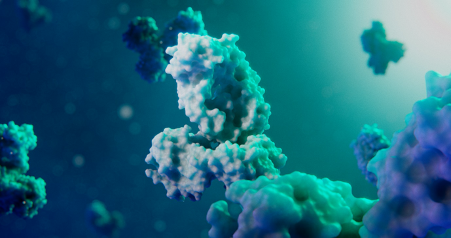

Advanced NMR Approaches to Support Recombinant Protein Development Including Vaccines
NMR in the vaccines and recombinant protein arena has a long history (1, 2) including many Nobel Prizes (3). Kurt Wütherich (Switzerland) won the Nobel Prize in Chemistry (2002) for “… development of nuclear magnetic resonance spectroscopy for determining the three-dimensional structure of biological macromolecules in solution”. With its strength in higher order structure determination, and through its quantitative nature, NMR has been a powerful, robust and ubiquitous technique for decades.
As evidence of the value of using NMR in the therapeutic protein space, recent work has focused on the higher order structure of proteins by both 1D proton and 2D (proton and carbon or nitrogen) methods. Several papers on the subject of profiling of formulated monoclonal antibodies by proton (1H) NMR have been published by Amgen over the past several years (6, 7). In their work, Amgen scientists have developed an effective process for generating fingerprint spectra of intact mAbs in their formulation buffers by mathematically removing signal arising from the buffers and amplifying small spectral differences. The resultant spectra show structural and hydrodynamic profiles of the antibodies which can be compared (e.g. reference samples to samples with a process change). The method can be used to compare and characterize antibodies in a relatively fast and efficient way (Figure 1).
A considerable amount of work on has been performed using 2-dimensional NMR methods (e.g. proton-carbon) to study antibodies , this work has been mostly carried out at regulatory agencies such as the National Institute of Standards and Technology (NIST – Rockville, MD www.nist.gov) and Health Canada (https://www.canada.ca/en/health-canada.html). A prime example is the work of John Marino et. al. at NIST looking at the structure of monoclonal antibodies by carbon-proton 2D NMR at natural abundance (8) and their use of multivariate analysis of the 2D NMR data to facilitate assessment of similarities in antibody higher order structure (9). There is also a very informative webinar on quality assessment of antibodies by NMR. Again, the evaluation of biosimilars is an attractive target for the use of NMR in determination of antibody/protein similarity and comparison of higher order structure of therapeutic proteins as highlighted by the 2D NMR assessment of a filgrastim biosimilar by NIST, Health Canada and others (10).
The work at Health Canada is significant as it uses both 1D PROFILE to fingerprint and compare similarity, and then uses 2D methods to check the samples in the event that differences are found. Additional information, by way of an interview with Health Canada scientist Yves Aubin is also available here and referenced below (11). It should be noted that 2D NMR is also quantitative, and in recent years, a significant advancement for NMR has been the development of USP and EDQM methods to differentiate between normal and adulterated heparin, a 12-15 KDa glycosaminoglycan polymer (12). With this more recent push into the clinical space, NMR is similar with other techniques and operations, as compliance with the principles of Good Laboratory Practice (GLP) or Good Manufacturing Practice (GMP) is mandatory for those using NMR methods when working in late stage process development and manufacturing (13).
In summary, NMR has been used successfully for almost 2 decades in the determination of biologic drug’s quality; including antibodies, vaccines, polysaccharides and peptides. Additionally, with ever increasing computational processing power, developments into higher field NMR systems and, new accessories (including hyphenation techniques), NMR will continue to evolve and grow within this space.
References
- Wüthrich K., Nat Struct Biol 1998;5 (suppl): 492–495.
- NMR Spectroscopy and its Application to Biomedical Research, Elsevier Press (!996) S. K. Sarkar (editor)
- https://en.wikipedia.org/wiki/List_of_Nobel_laureates_in_Physics
- https://doi.org/10.1016/B978-0-444-59573-7.00013-0 (Chapter 13)
- Berti,F. (Chapter 12) in Bernd Lepenies (ed.), Carbohydrate-Based Vaccines: Methods and Protocols, Methods in Molecular Biology, vol. 1331, DOI 10.1007/978-1-4939-2874-3_12
- L. Poppe et al., Anal. Chem., 85, 9623−9629 (2013).
- L. Poppe et al., Anal. Chem., 87, 5539-5524 (2015).
- Robert G. Brinson, John P. Marino, et al. (2019), mAbs, 11:1, 94-105, DOI: 10.1080/19420862.2018.1544454
- Arbogast et al., Anal. Chem., 89 (21), 11839–11845 (2017).
- Nature Biotechnology Letters 34 (2), 139-141 (2016).
- Yves Aubin Interview: https://www.youtube.com/watch?v=ZmxJBpJdz3Y
- https://www.bruker.com/products/mr/videos/ronzoni-institute.html
- https://www.bruker.com/products/mr/mr-in-pharma/instrument-qualification.html


